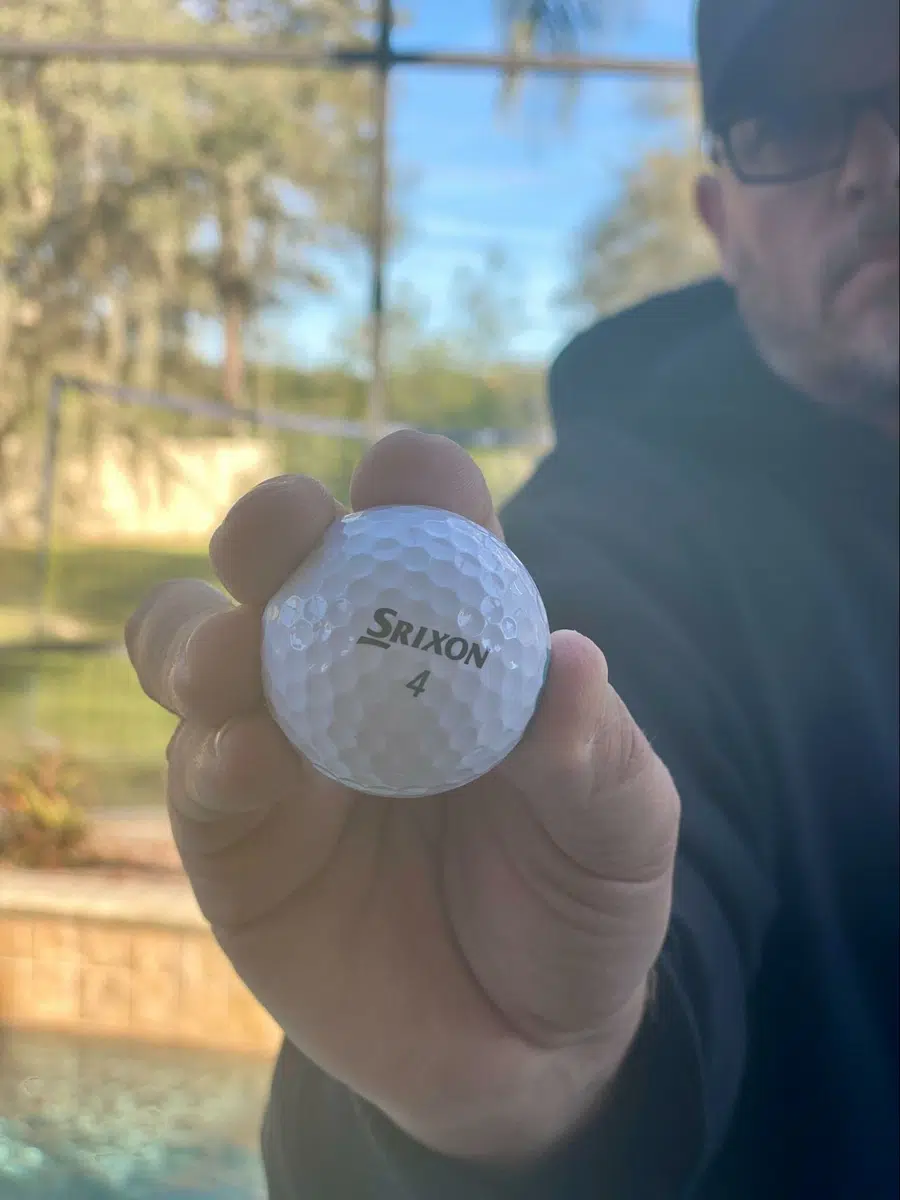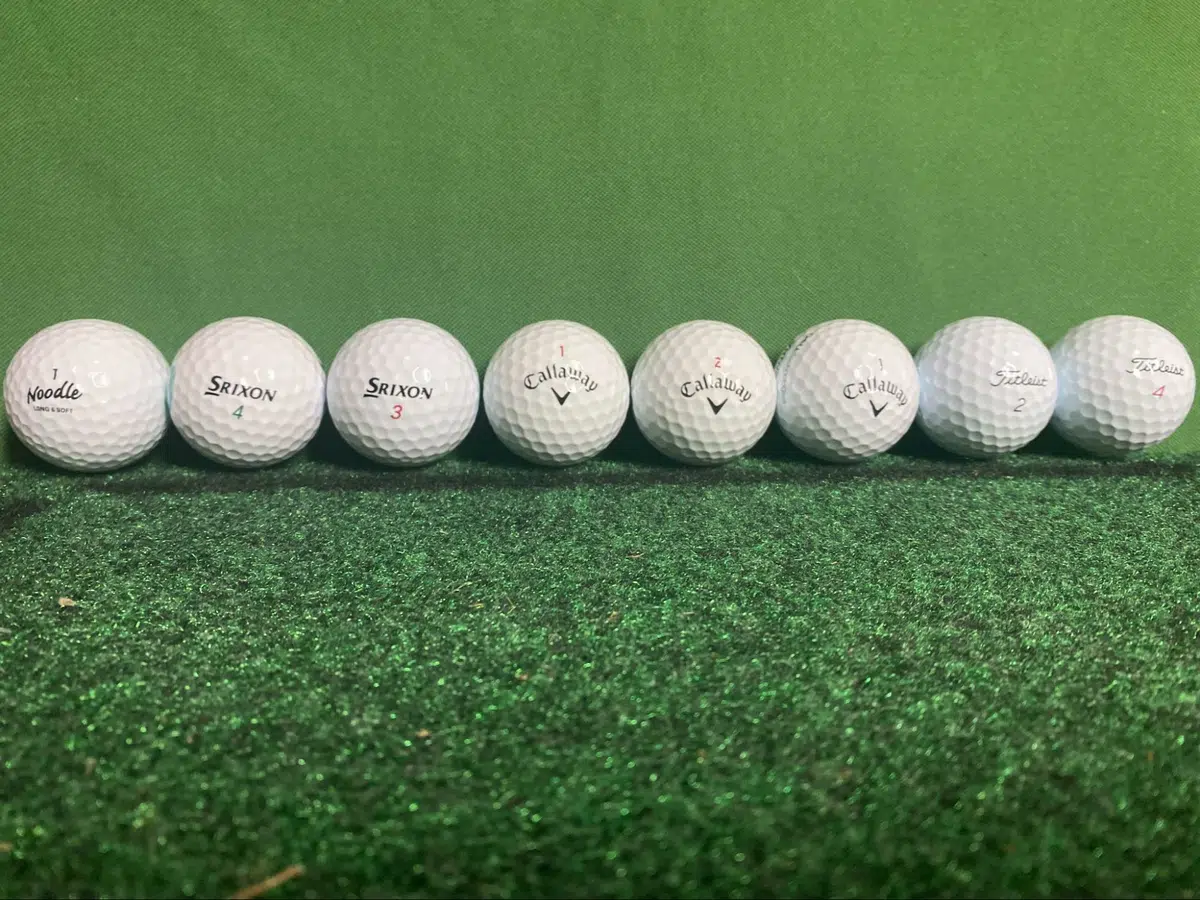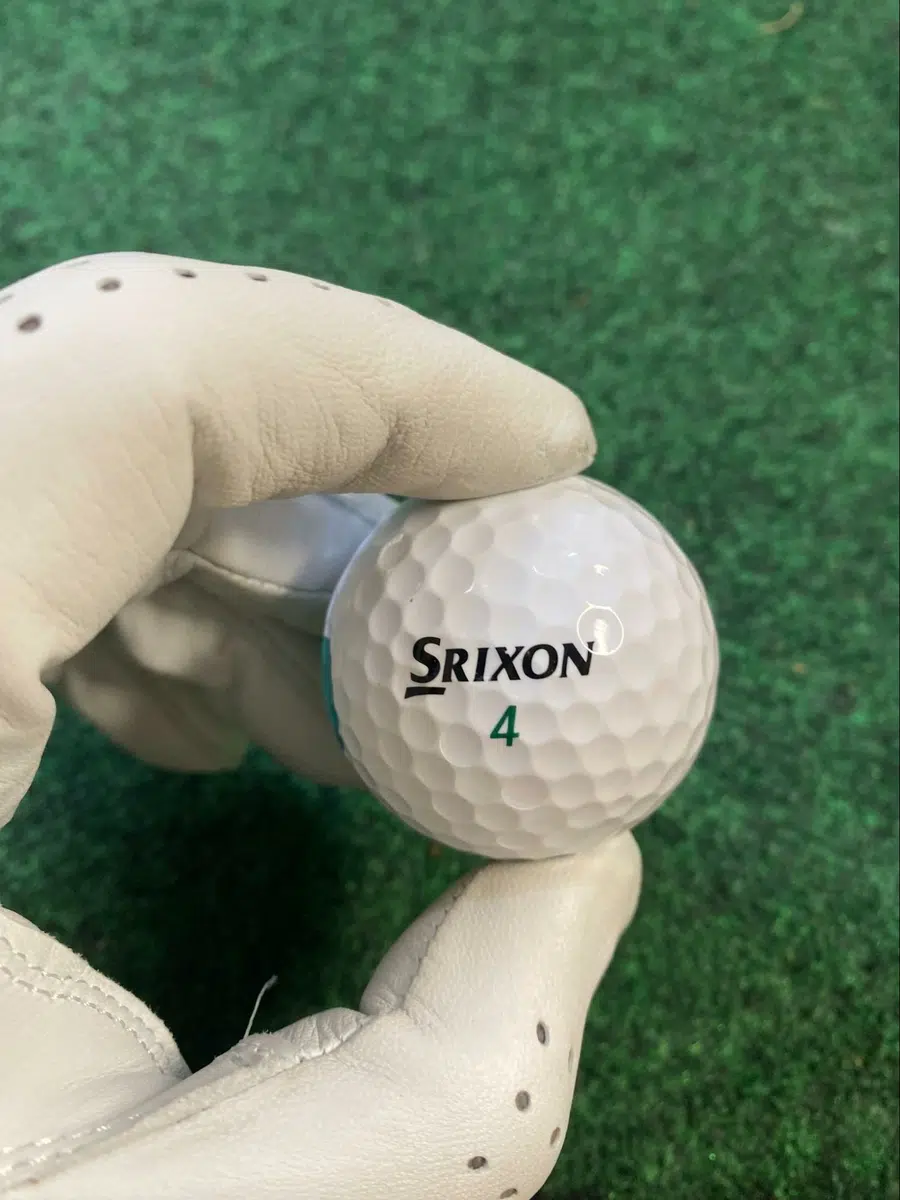The number of dimples on a golf ball varies primarily by the number of pieces the ball has. Here are the most common number of dimples for each type of ball:
- Two-piece golf balls: 336 dimples
- Three-piece balls: 318 dimples
- Four-piece balls: Up to 400 dimples
The number of dimples on a ball can vary by manufacturer and model; the numbers on the most popular balls are below.
Read on if you want to learn all about dimples on a golf ball. This article will cover the number of dimples, typical patterns, and even the history of the dimpled golf ball.
After reading this post, check out what the numbers mean on golf balls in that quick article.
Number of Dimples on Popular Golf Balls
The most popular golf balls, Titleist, Callaway, Bridgestone, Srixon, and others, produce balls with different design specifications based on their own unique research and development. Interpretations of a golf ball’s performance characteristics will vary by manufacturer.
The most common golf ball is the two-piece ball. These balls typically have 336 dimples, but some may have as few as 300 or as many as 500 dimples.
Multi-layer golf balls, or three-piece and four-piece balls, are becoming increasingly popular. The most common number of dimples on a three-piece golf ball is 318, while four-piece balls may have as many as 400 dimples.
Specialty golf balls are also available for specific types of golfers. For example, low-compression golf balls are designed for golfers with slower swing speeds, and high-compression golf balls are designed for golfers with faster swing speeds. The dimples on these balls can vary depending on the manufacturer and the design.
More from Golfspan.com: Golf Ball Marking – Is It Just About Identifying Your Golf Ball?
Why Do Golf Balls Have Dimples?

Golf balls have dimples because it makes them more aerodynamic, and they fly further.
When a golf ball is hit, it spins rapidly in the air. As the air passes the ball, it enters the dimples, creating turbulence and a layer of air around it. This air layer reduces drag, allowing the ball to travel farther and more accurately.
Dimples also help lift a golf ball. Like an airplane wing, they help create a pressure difference that uplifts the ball. Without dimples, a golf ball would not travel as far or as accurately. It would become an object at the mercy of air pressure, drag forces, wind velocity, and other external factors.
How Big Are Dimples On a Golf Ball?


The dimples on any golf ball are small, measuring only a few millimeters in diameter. Some balls will have deeper dimples, while others will have a more shallow dimple design.
Two-piece balls have a solid rubber core and a thin layer of plastic or rubber covering the core. The dimples on these balls are usually arranged in a symmetrical pattern, with the same number of dimples on each hemisphere and relatively small.
Multi-layer golf balls, or three-piece or four-piece balls, have a larger core and additional layers of plastic or rubber around it. The dimples on multi-layer golf balls are typically smaller and more numerous than those on two-piece balls.
With specialty balls, the size of the dimples will vary depending on the manufacturer and the ball’s overall design and purpose.
Regardless of the dimple depth, size, or pattern on a golf ball, each design serves the same purpose—to reduce air resistance and help the ball travel farther and more accurately through the air.
There are regulations on golf balls as dictated by the United States Golf Association (USGA) and their partners at the R&A. For a golf ball to be deemed a conforming regulation golf ball, it must go through testing at the USGA.
For example, a golf ball’s weight can not exceed 1.620 ounces and must be between 1.68 and 1.62 inches in diameter. It must also be constructed with a single core and a cover made of either urethane or surlyn. Just like slight variances in dimples from one manufacturer to another, the same is true with golf ball weights and sizes.
Another interesting read: The Inside of Golf Balls: A Visual Guide
Different Golf Ball Dimple Patterns


The most common pattern features small, circular dimples arranged in a regular pattern across the ball’s surface. This design produces a high trajectory with a soft landing, making it ideal for golfers who want maximum carry distance and accuracy.
Another popular pattern features hexagonal-shaped dimples arranged in a honeycomb-like pattern across the ball’s surface. This design reduces drag and increases lift, resulting in longer, straighter shots.
The hybrid pattern combines elements of the traditional and hexagonal patterns, providing a balance of distance and accuracy. This pattern is a good choice for golfers who want a ball that performs well in various conditions.
Ball manufacturers also use specialized patterns to achieve specific performance characteristics. Some balls feature dimple patterns designed to reduce spin, while others enhance spin for better control around the greens.
To find the right golf ball, try out different options on the course and observe their performance. If you’re a beginner or have a slower swing speed, a softer ball with a lower compression may be more forgiving and travel farther. If you have a faster swing speed, a harder ball with a higher compression may provide more control and distance.
Consider the course conditions you typically play on. If you play on a course with lots of water, a ball with a softer cover for better spin and control may be best. If you play on a course with a lot of wind, a ball with a harder cover may better maintain distance and accuracy.
More great golf info from Golfspan.com: Golf Ball Size: Diameter, Circumference, Radius
When Did Golf Balls Get Dimples?
Golf balls first saw dimples in 1905, when William Taylor, an Englishman, patented the first intentionally dimpled golf ball, revolutionizing the sport and forever changing the design of golf balls. Over the course of the game’s history, from its roots in Scotland to today, equipment has changed dramatically as discoveries and technologies have been introduced.
In the mid-1800s, golfers discovered that balls with unintentional nicks and scratches traveled further than smooth ones, leading to the eventual concept of dimpled golf balls. However, it wasn’t until 1905, with William Taylor’s introduction of golf balls featuring purposeful dimple patterns, that golf balls routinely saw them.
Before that discovery, most golfers played with a smooth golf ball. It’s crazy to think that golf balls were once stuffed with goose feathers, had a leather cover, and were often held together with tree sap. It is a good thing that we no longer play gutties!
These dimples create turbulence around the ball, reducing drag and allowing for improved distance and accuracy.
FAQ
How many dimples are on a PGA pro’s golf balls?
The number of dimples on a PGA TOUR professional golf balls will all depend solely on which brand and model they play. The golf balls the pros play are no different than what the golf consumer can purchase and play with.
Brendon is Class A PGA Professional and founded Little Linksters, LLC, and its nonprofit arm, the Little Linksters Association for Junior Golf Development. He won 25+ prestigious industry honors, including the 2017 PGA National Youth Player Development Award. He graduated from the PGA of America Management Program and has a handicap index of 7.8.
He has played golf for over 40 years and currently plays twice a month at the Eagle Dunes Golf Club near Sorrento, Florida. He loves Srixon clubs and plays a ZX5 driver with Z 585 irons. He’s written over 60 articles on GolfSpan and specializes in sharing tips to improve your golf game. You can connect with Brendon at LinkedIn, X, IG, FB, his website, or [email protected].
- Best score: 69
- Favorite driver: Srixon ZX5
- Favorite ball: Srixon Z Star
- Favorite food at the turn: Turkey and cheese on white

![[original_title]](https://rawnews.com/wp-content/uploads/2024/04/number-of-dimples-on-golf-balls-1024x576.jpg)













